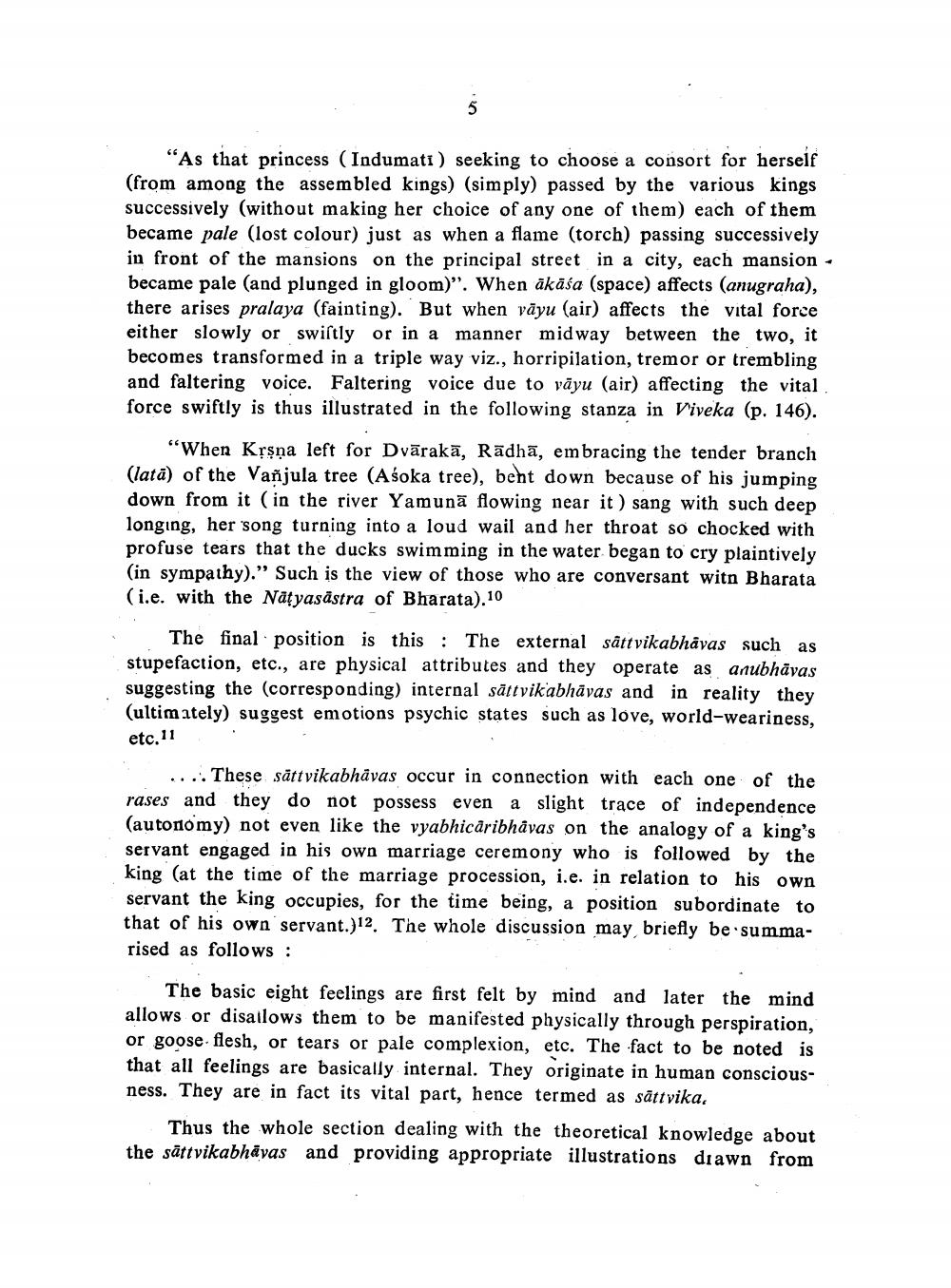________________
"As that princess (Indumati) seeking to choose a consort for herself (from among the assembled kings) (simply) passed by the various kings successively (without making her choice of any one of them) each of them became pale (lost colour) just as when a flame (torch) passing successively in front of the mansions on the principal street in a city, each mansion - became pale (and plunged in gloom)". When ākāśa (space) affects (anugraha), there arises pralaya (fainting). But when vāyu (air) affects the vital force either slowly or swiftly or in a manner midway between the two, it becomes transformed in a triple way viz., horripilation, tremor or trembling and faltering voice. Faltering voice due to vāyu (air) affecting the vital force swiftly is thus illustrated in the following stanza in Viveka (p. 146).
"When Krsna left for Dvārakā, Rādhā, embracing the tender branch (latā) of the Vañjula tree (Asoka tree), bent down because of his jumping down from it (in the river Yamunā flowing near it ) sang with such deep longing, her song turning into a loud wail and her throat so chocked with profuse tears that the ducks swimming in the water began to cry plaintively (in sympathy)." Such is the view of those who are conversant witn Bharata (i.e. with the Natyasästra of Bharata).10
The final position is this : The external sättvikabhāvas such as stupefaction, etc., are physical attributes and they operate as anubhāvas suggesting the corresponding) internal sättvikabhāvas and in reality they (ultimately) suggest emotions psychic states such as love, world-weariness, etc. 11 .
.... These sättvikabhāvas occur in connection with each one of the rases and they do not possess even a slight trace of independence (autonomy) not even like the vyabhicăribhāvas on the analogy of a king's servant engaged in his own marriage ceremony who is followed by the king (at the time of the marriage procession, i.e. in relation to his own servant the king occupies, for the time being, a position subordinate to that of his own servant.)12. The whole discussion may briefly be summarised as follows:
The basic eight feelings are first felt by mind and later the mind allows or disallows them to be manifested physically through perspiration, or goose flesh, or tears or pale complexion, etc. The fact to be noted is that all feelings are basically internal. They originate in human consciousness. They are in fact its vital part, hence termed as sättvika.
Thus the whole section dealing with the theoretical knowledge about the sättvikabhāvas and providing appropriate illustrations diawn from
the Sthus the whole ne providing a propriae




